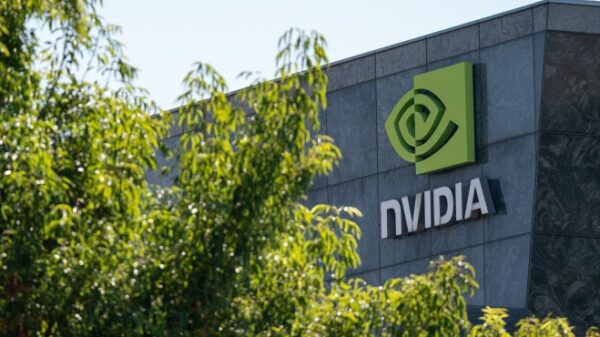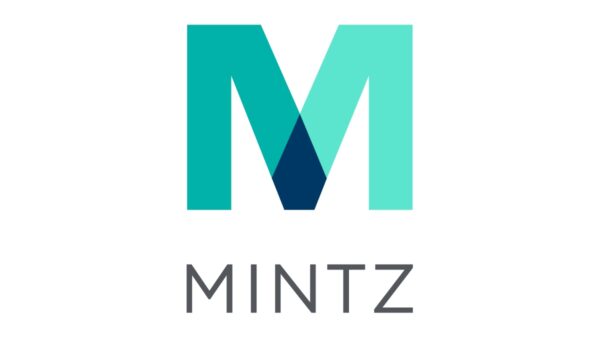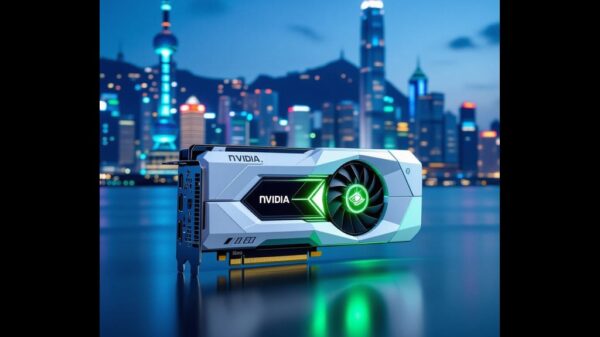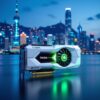Tech stocks worldwide experienced a significant rally following Nvidia‘s release of unexpectedly strong earnings, alleviating investor concerns regarding a potential artificial intelligence “bubble” and rejuvenating confidence in the sector. The company’s optimistic forecast for its next quarter further stoked enthusiasm, contributing to a global surge in equities linked to AI.
Nvidia reported approximately $57 billion in revenue for the quarter, primarily fueled by robust data-center demand. CEO Jensen Huang dismissed the idea of a fleeting AI hype cycle, describing the demand as “incredible” and revealing that customer bookings extend into 2026. The firm also projected about $65 billion in revenue for the upcoming quarter, exceeding analyst expectations and indicating sustained momentum in the market.
The news initiated a strong relief rally across Asia. Shares of Taiwan’s TSMC, a critical supplier to Nvidia, surged over 3.6 percent, while South Korea’s SK Hynix and Samsung Electronics each rose more than 4 percent. Japan’s Nikkei index also climbed sharply, reclaiming the 50,000 level.
European markets mirrored this trend, with the pan-European STOXX 600 rising nearly 1 percent. Semiconductor and AI-equipment companies such as ASML gained approximately 2.8 percent. In the U.S., chipmakers like Advanced Micro Devices and Intel also enjoyed solid gains, reflecting a renewed investor appetite for AI infrastructure plays.
While Nvidia’s earnings helped mitigate worries that the rapid AI build-out was merely speculative, some investors remain cautious. They highlight that although spending on AI infrastructure is aggressive, there are uncertainties regarding whether this capital expenditure will yield sustained profitability. Analysts have also pointed out potential constraints, including high costs of data-center expansion, challenges related to energy consumption, and memory-chip bottlenecks that could affect future growth.
Many market observers regard Nvidia’s impressive results as validation of a durable AI growth cycle rather than a temporary surge. The robust earnings suggest genuine, deep-rooted demand rather than mere speculation. In light of these developments, some investors are advocating for a more diversified approach to capitalize on AI growth, encompassing not only chip designers like Nvidia but also infrastructure players, software platforms, and cloud providers.
Other companies are also benefiting from the AI momentum. Intel, for instance, has seen its shares surge in 2025 as it accelerates strategic investments and implements cost-cutting measures. Additionally, Qualcomm experienced an impressive share increase of 11 percent following the announcement of plans to expand into AI-optimized datacenter chips, further underscoring the sector’s trajectory.
Nvidia’s exceptional earnings and its confident forward guidance have rekindled optimism in global tech markets, reflecting renewed faith in AI infrastructure spending, particularly within the realm of data-center expansion. However, while the relief among investors is evident, the long-term trajectory of the market will be closely scrutinized. The sustainability of capital expenditure, effective energy management, and robust supply-chain execution will be critical in determining whether this market rally signals the beginning of a lasting supercycle or merely represents a temporary rebound.
 Amazon Cuts 14,000 Jobs in 2025, 40% of Layoffs Target Engineering Roles Amid AI Push
Amazon Cuts 14,000 Jobs in 2025, 40% of Layoffs Target Engineering Roles Amid AI Push High Seas Treaty: Major Corporate Shifts Ahead as Ocean Conservation Demands Rise by 2026
High Seas Treaty: Major Corporate Shifts Ahead as Ocean Conservation Demands Rise by 2026 GPT-5.1 Tops LLM Council Rankings, Surpassing Gemini 3.0 and Claude in New Experiment
GPT-5.1 Tops LLM Council Rankings, Surpassing Gemini 3.0 and Claude in New Experiment Trump Approves 35,000 Nvidia Chips to Gulf States, Weighs H200 Exports to China
Trump Approves 35,000 Nvidia Chips to Gulf States, Weighs H200 Exports to China Google Accelerates AI Transformation with Gemini 3 Amidst Rising Competitive Pressure
Google Accelerates AI Transformation with Gemini 3 Amidst Rising Competitive Pressure






































































